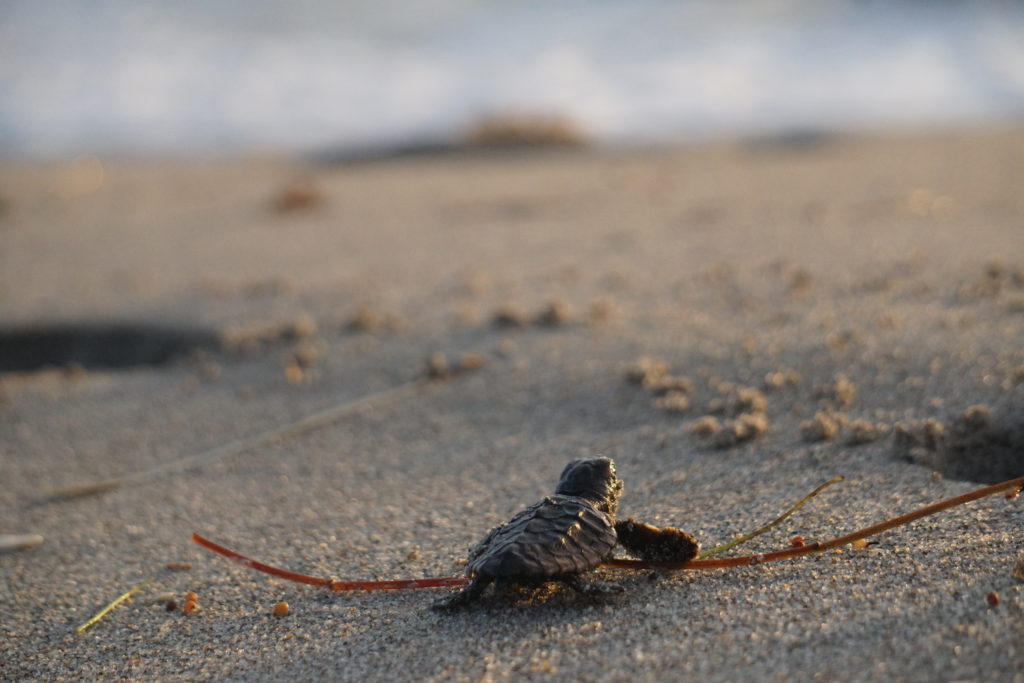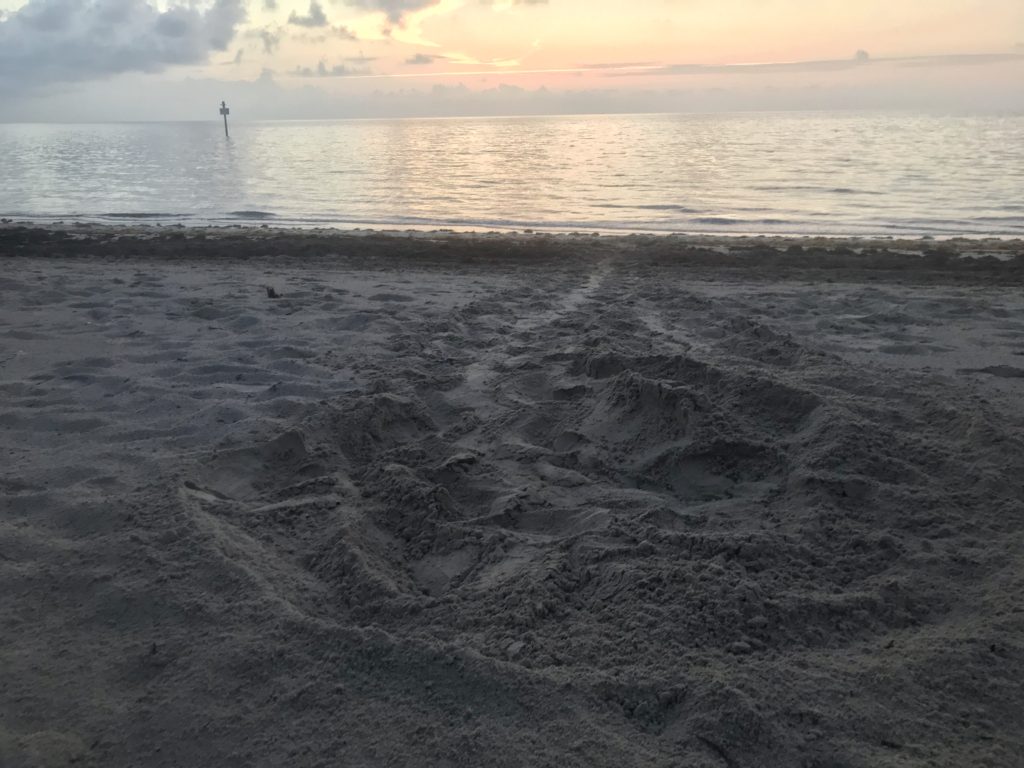Our Turtle-y Awesome Neighbors
Briana GibbsOctober 31, 2019

A loggerhead sea turtle hatchling on the beach. All activities with sea turtles in Miami-Dade County are conducted by authorized personnel under FWC permit No. 19-017. (Sarah Ortiz via Key News)
Oct. 31 marks the end of sea turtle nesting season in Miami-Dade County, but it doesn’t stop conservationists thinking about their aquatic neighbors. The season stretches from May 1 to Oct. 31, but sea turtles can nest before or after these dates. In Palm Beach County a sea turtle nest was reported Oct. 29, meaning the eggs will not hatch until December.
Key Biscayne’s history with sea turtles has shifted from reports of hunting sea turtles in the 1960s to today’s conservation efforts. There are hundreds of nests protected up and down the coast from Bear Cut to Cape Florida in Bill Baggs State Park each year – though the Florida Wildlife Commission does not publicly report specific data on numbers in order to protect the nests.
According to the County’s Sea Turtle Conservation Program Assistant Manager, Colette Biondi, “sea turtle nesting numbers have been stable over the past few seasons, which is good because the turtles are returning to Key Biscayne. It is a darker and more natural beach.”
Sea turtles are unique reptiles with amazing life cycles, relatively unchanged over the last 110 million years.
Hatchlings are small enough to fit in the palm of your hand (though there’s a hefty fine associated with doing that – so leave turtle handling to the professionals) and grow to hundreds and sometimes thousands of pounds as adults.
The three main species that nest on Miami’s beaches include the Loggerhead, Green and Leatherback Sea Turtles. Here on Key Biscayne, Loggerheads are the most common nesting species.

A loggerhead sea turtle nest. All activities with sea turtles in Miami-Dade County are conducted by authorized personnel under FWC permit No. 19-017. (Briana Gibbs via Key News)
The hatchlings make their way from the nest to the ocean swimming hundreds of miles to reach the Sargasso Sea in the Atlantic Ocean where they reside for 5 to 20 years until they reach sexual maturity. It is estimated that only 1 in 1,000 hatchlings that makes it to the ocean will survive to adulthood.
Upon reaching sexual maturity, sea turtles will return to coastal waters to breed and the females crawl up onshore to lay their nests. The females lay nests unique to their species and camouflage their nests to protect their eggs, and then the females return to the ocean, never to see their nests again. In one season a mother lays anywhere from 2 to 7 nests with approximately 100 eggs per nest.
After completing her nesting, the mother returns to her offshore feeding grounds and remains there until the next season, when she will return again. One of the more well-known things about these organisms is that they will return to within 5 miles of the beach they were born on, traveling hundreds of miles across oceans.
But it’s not all plain sailing.
Although sea turtles are no longer hunted in the U.S., they face myriad threats from humans. Both hatchlings and adult sea turtles can be disoriented due to artificial or ‘white’ lights near the shore at night. Disorientation can lead to death and also reduce energy levels, preventing turtles from making a successful journey back to the sea.
Luckily for us there are easy solutions to this problem – turning the lights off or switching to low wavelength amber lights.
Plastics are a major problem for sea turtles. Gumbo Limbo Nature Center, a sea turtle rehabilitation facility in Boca Raton, reported that 100 percent of their dead washback sea turtles (hatchlings that are a few weeks old) had plastic pieces in their stomachs. Adult sea turtles have also been documented to eat plastic bags, mistaking them for jellyfish. The plastic pollution comes from people and goes into our oceans. By refusing to use single-use plastics, everyone can make a difference to our sea turtle neighbors.
Education is a key part of sea turtle conservation. “Informing others about the types of threats that sea turtles face is the number one thing the average person can do,” said Biondi.
The County conservation program keeps authorized personnel on staff to respond to sick, injured or dead sea turtles year-round.
If you find one, contact the FWC 24-hour Wildlife Alert Number at 1-888-404-FWCC (1-888-404-3922) or you the program directly at 305-310-3046.
Briana Gibbs is a marine biologist specializing in fisheries management, who received her Master of Science from University of Miami Rosenstiel School of Marine and Atmospheric Science.


